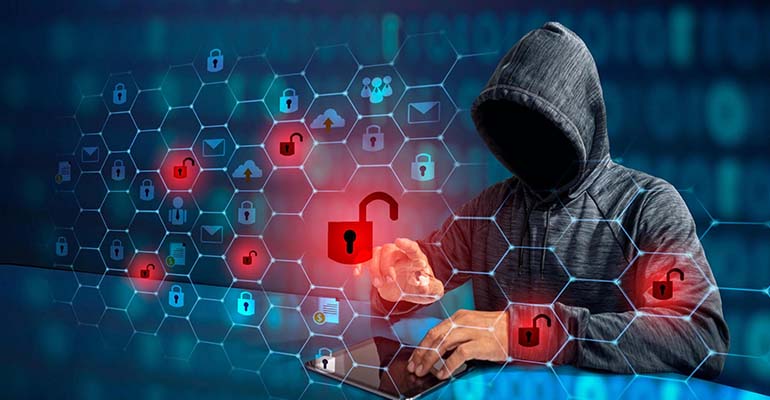What is Ransomware ?
Imagine waking up to find your digital world inaccessible. Files locked, systems frozen, a chilling message demanding a hefty sum for the return of your precious data. This, my friend, is the reality of ransomware attacks, a malware that acts like a digital kidnapper, holding your information hostage until you pay the ransom.
Ransomware Attack Statistics and Predictions for 2024
A chilling digital specter haunts the online world – ransomware attacks. As we delve into 2024, one question casts a long shadow: will this year witness an even more potent strain of ransomware attacks? The answer, unfortunately, seems grim. Experts paint a sobering picture, one where the ransomware threat continues to evolve, becoming more sophisticated, targeted, and disruptive. It’s estimated that, by 2031, a ransomware attack will occur every 2 seconds.
Here’s what we can expect in the realm of digital shadows:
- Ransomware as a service or RaaS : This is a type of cyberattack where hackers gain access to victim’s system and then encrypt their files, making them unusable and demand a ransom from the victim to decrypt the files and make them usable use again. The technology and resources necessary to carry out the attacks are now available for rent on the dark web, enabling even less sophisticated actors to cause damage. The RaaS model is poised to drive cybercrime away significantly forward by 2024 to empower more sophisticated criminal syndicates.
- Triple Extortion Tactics: Beyond data encryption, criminals now leak stolen facts publicly or in the darkweb; ass to this another layer of pressure of disruption and destruction. Triple extortion ransomware is a rapidly growing threat that takes traditional ransomware tactics to a more distructive level. The different stages of this attack are – Encryption and data theft, Data exposure threat, Disruption and destruction. Security firm Palo Alto Networks reported a 400% increase in triple extortion attacks in 2021 compared to 2020.
- Supply Chain Targeting: As 2024 unfolds, interconnected supply chains and increasingly sophisticated attacks like poisoning training data, injected algorithms, prompt engineering exploits etc are creating a perfect storm for vulnerabilities within Generative AI ecosystems. The traditional focus on upstream and downstream threats is expanding, with attackers seeking innovative ways to exploit weaknesses in diverse components beyond familiar vectors. Attackers are shifting their focus to interconnected networks, infiltrating vulnerable vendors to gain access to larger, high-value targets. This “island hopping” approach can cripple entire ecosystems, causing widespread disruption. Supply chain attacks have been on the rise since 2022 by 600% and this number is poised to increase.
- Generative AI Driven attacks on the rise: Given the influx of Generative AI reconnaissance, phishing attacks and thereby exploitations will contribute to major ransomware attacks. A McAfee report predicts that by 2024, “AI-powered phishing attacks will have a 90% success rate in bypassing traditional email filters.” Security researchers predict that by 2024, AI-powered malware will be able to “learn and adapt” to security defenses in real-time, making it significantly harder to detect and neutralize. (Source: Trend Micro Global Cybersecurity Report 2023)Ransomware attacks is not a new threat and it is going to evolve and continue to unleash its tentacles in different industries in the coming years. In fact, according to some reports, ransomware incidents and occurances have increased by over 150% in 2023 compared to 2019.neutralize. (Source: Trend Micro Global Cybersecurity Report 2023.
The Impact of Ransomware on Business
Ransomware has a devastating effect on businesses both short-term and long-term. A few significant ways it can cripple businesses are:
Financial loss
- Ransom payment is the immediate and most direct cost, often in cryptocurrency to decrypt lost data
- Ransomware can cripple your operations, bringing essential systems to a halt; leading to lost revenue and missed deadlines.
- Data recovery and repair is a cost that needs to be incurred even if you don’t pay ransom. The effort that goes into restoring data from backup and rebuilding systems could be higher.
- Depending on the data loss, the company may face legal and regulatory compliance costs in the aftermath of the attack.
Reputational Damage
- A ransomware attack can seriously damage your company’s reputation, making customers question your ability to protect their data. This can lead to lost business and decreased customer loyalty.
- A high-profile attack can attract negative press coverage, further damaging your brand image and public perception.
Operational Damage
- Recovering from a ransomware attack can be a long and disruptive process, requiring significant time and resources from your IT team.
- If you’re not careful, a successful ransomware attacks can make you more vulnerable to future attacks by exposing weaknesses in your cybersecurity defenses Future vulnerabilities.
How to Prevent the Rising Threat of Ransomware Attacks
- Regular Backup of critical data – Build an impenetrable backup system for critical data. Store copies offline or in a separate, secure haven where ransomware can’t reach. Remember, two is one, and one is none; aim for multiple backups!
- Update all software with regular and latest security patches – Stay patched, stay protected. Don’t let unpatched vulnerability give cybercriminals an easy entry.
- Deploy robust firewalls, anti-virus software, anti-malware programs, intrusion detection systems.
- Knowledge is power. Equip your employees with regular cybersecurity awareness training sessions to reduce human error.
- Conduct periodic security audits and risk assessments to identify vulnerabilities in your infrastructure.
Staying aware is the surest way to stay ahead. If you think you need assistance to stay protected, we at Strongbox IT can work with you to develop best practices and build a secure infrastructure for your organization.





